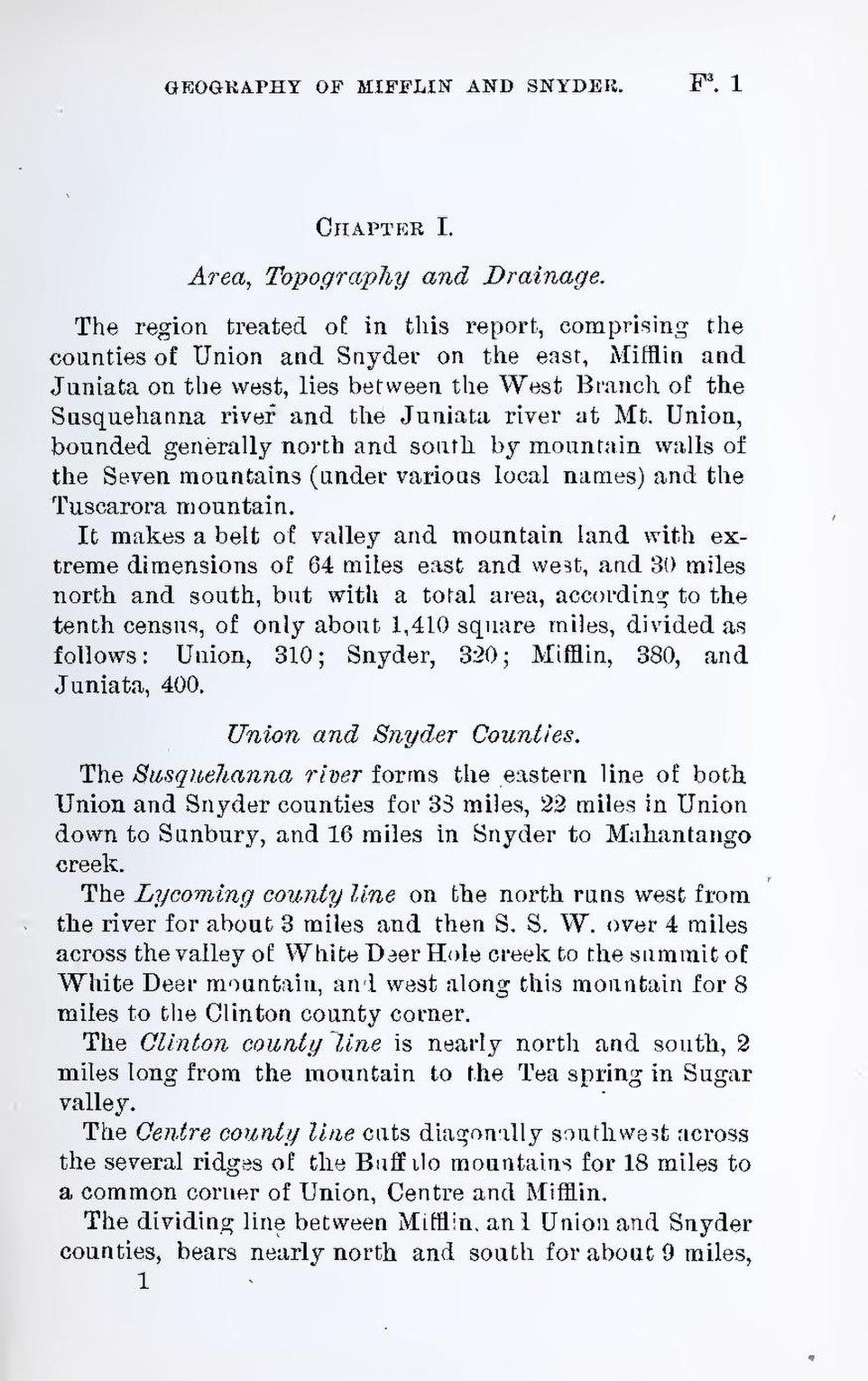Chapter I.
Area, Topography and Drainage.
The region treated of in this report, comprising the counties of Union and Snyder on the east, Mifflin and Juniata on the west, lies between the West Branch of the Susquehanna river and the Juniata river at Mt. Union, bounded generally north and south by mountain walls of the Seven mountains (under various local names) and the Tuscarora mountain.
It makes a belt of valley and mountain land with extreme dimensions of 64 miles east and west, and 30 miles north and south, but with a total area, according to the tenth census, of only about 1,410 square miles, divided as follows: Union, 310; Snyder, 320; Mifflin, 380, and Juniata, 400.
Union and Snyder Counties.
The Susquehanna river forms the eastern line of both Union and Snyder counties for 38 miles, 22 miles in Union down to Sunbury, and 16 miles in Snyder to Mahantango creek.
The Lycoming county line on the north runs west from the river for about 3 miles and then S. S. W. over 4 miles across the valley of White Deer Hole creek to the summit of White Deer mountain, and west along this mountain for 8 miles to the Clinton county corner.
The Clinton county line is nearly north and south, 2 miles long from the mountain to the Tea spring in Sugar valley.
The Centre county line cuts diagonally southwest across the several ridges of the Buffalo mountains for 18 miles to a common corner of Union, Centre and Mifflin.
The dividing line between Mifflin and Union and Snyder counties, bears nearly north and south for about 9 miles,
